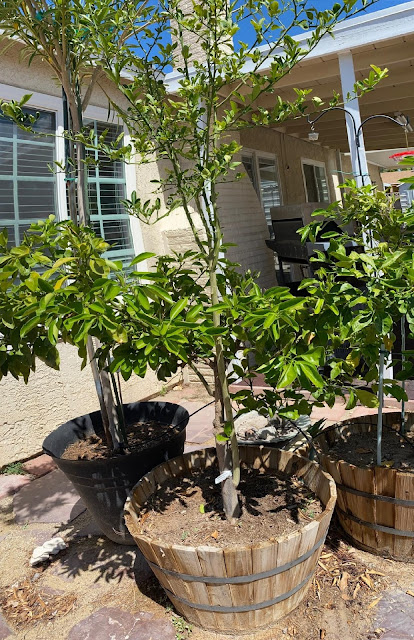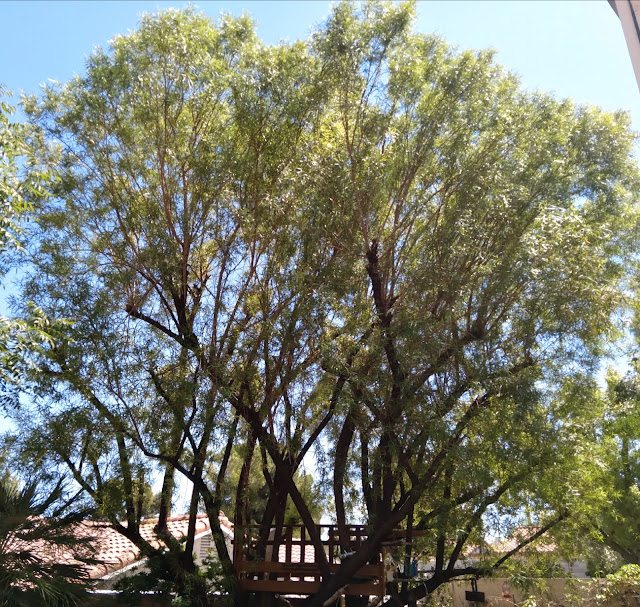Use Fewer Plants
Using fewer plants makes the remaining plants more visually important and saves water. A landscape full of plants is enamoring. It’s a jungle of plants. The temptation in our Western Hemisphere to fill “voids,” open spaces, with plants. Western floral arrangements are full of plants. However, each plant uses water. If we cluster them together, they are easier to water, easier to manage, and collectively use less. However, the more area not covered by plants, the lower a landscapes’ water bill.
 |
| Western floral design fills all the spaces with flowers. We treat our landscapes the same way. |
Small Plants
Use smaller plants. Smaller plants do the
same job as larger plants and use less water. A decrease in plant size
decreases their need for water. This leads to less total landscape water demand.
If you already have large trees and shrubs, prune them smaller. Making plants
smaller decreases their need for water. Remember, decreasing plant numbers and
size only works if the amount of water they are given is also decreased. Manage
the water they get.
 |
| Eastern floral design stresses using negative spaces in interesting ways. |
Xeric Plants Use Less Water
Use xeric plants. Xeric plants are watered less often, but with the same amount of water. Plants watered less often but still look good leads to a decrease in total landscape water use during the year. To do that, these plants need to be on a separate valve or station. Place xeric plants on separate valves or “water lines” (hydrozone) from plants that need water more often. Anytime plants are watered less often, even if you give a plant the same amount of water, a landscape saves water.
 |
| Palo Verde is xeric in its water use because it comes from the Sonoran Desert |
Water Use is Set When it is Designed
Once landscapes are designed and
installed, future landscape water use, and how often they need water, is carved
in stone. Watering plants less often does not always lead to better looking
landscapes. Some plants, like mesic plants, need water more often. Plants
demand for water is not negotiable.
Once a landscape design has been selected, the landscape water use is set.
When plants are watered less, changes in appearance
occur; growth slows, leaves or needles begin to scorch and the canopy thins,
leaves or needles drop, branches die, and finally the plant or tree may die. Use
this as a signal to water more often. But water deep. When water is returned, many
plants spring back to life.
There is a tradeoff in perceived beauty vs.
water use. Landscapes do not just have to be for plants. Conserving water is a
reason homeowners are encouraged to use art forms in their landscapes that do
not need water. Homeowners can become familiar with creating beautiful negative
spaces without the use of plants. Our job in the desert is to create landscapes
that conserve water while enjoying it at the same time.






.JPG)



.jpg)

.jpg)
.JPG)
.jpg)



.JPG)
.JPG)



.JPG)
.JPG)
.JPG)
.jpg)

